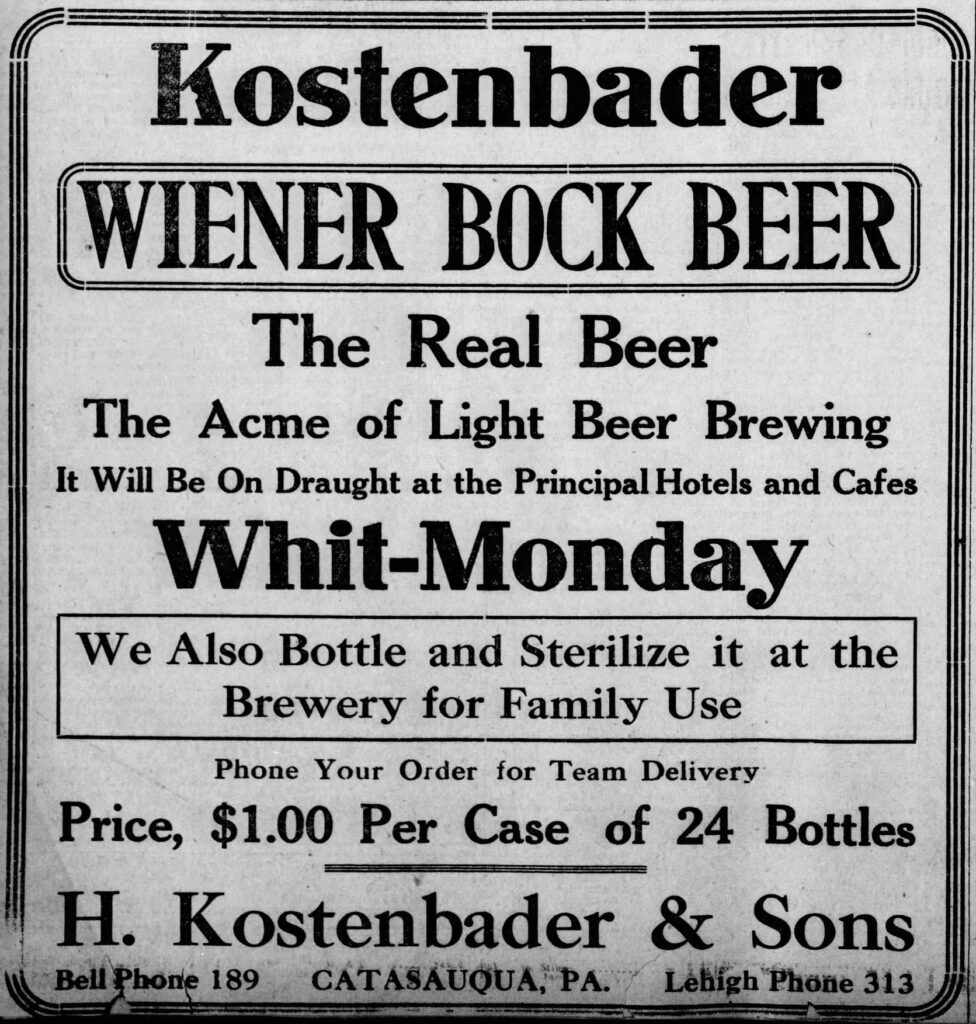
Last year I decided to concentrate on Bock ads. Bock, of course, may have originated in Germany, in the town of Einbeck. Because many 19th century American breweries were founded by German immigrants, they offered a bock at certain times of the year, be it Spring, Easter, Lent, Christmas, or what have you. In a sense they were some of the first seasonal beers. “The style was later adopted in Bavaria by Munich brewers in the 17th century. Due to their Bavarian accent, citizens of Munich pronounced ‘Einbeck’ as ‘ein Bock’ (a billy goat), and thus the beer became known as ‘Bock.’ A goat often appears on bottle labels.” And presumably because they were special releases, many breweries went all out promoting them with beautiful artwork on posters and other advertising.
Tuesday’s ad is for Wiener Bock Beer. The ad was published on May 27, 1912. This one was for H. Kostenbader & Co. of Catasauqua, Pennsylvania, which was originally founded in 1867 and often known as the Eagle Brewery. This ad ran in the Morning Call, of Allentown, Pennsylvania. No word as to why they called it “Wiener Bock Beer,” or what makes it “The Real Beer.” But at least they “also Bottle and Sterilize it at the Brewery for Family Use.” For “Family Use?” What does that mean?


Last year’s focus on Bock ads seems like such a fascinating dive into beer history! I had no idea Bock’s origins traced back to Einbeck and how the name evolved through Bavarian accents. The connection to seasonal releases and the use of goats in branding is so clever—it really highlights the cultural storytelling behind beer. I wonder if modern breweries still put as much effort into their seasonal promotions as they did back then. The artwork on those old posters must have been stunning—do you think it played a big role in Bock’s popularity? Also, do you have a favorite Bock beer or brewery that stands out to you? I’d love to hear your thoughts on how Bock has evolved over the centuries!